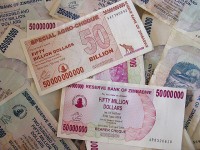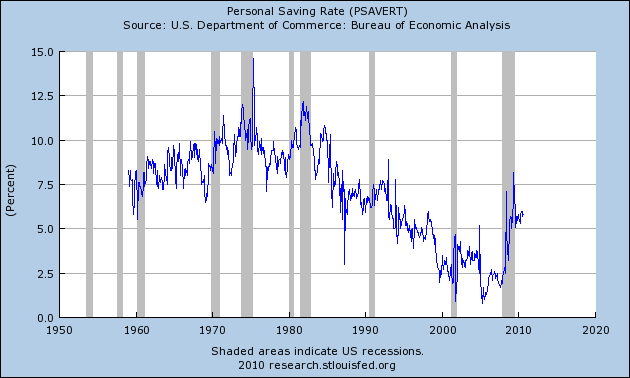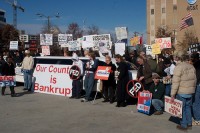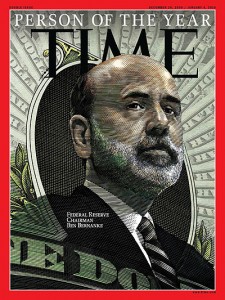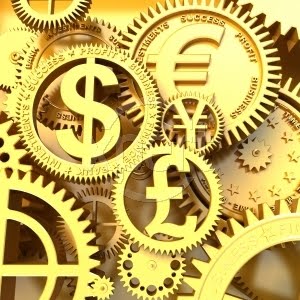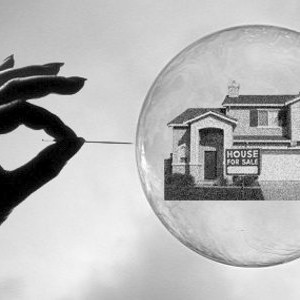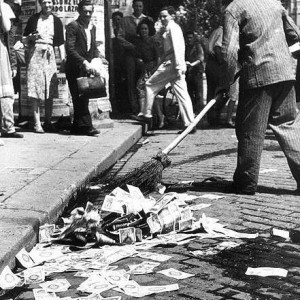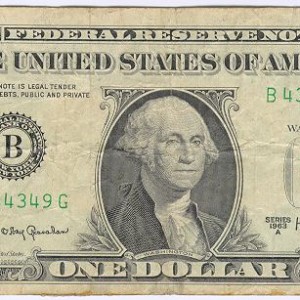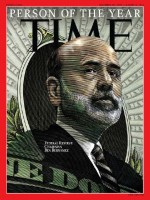 When Federal Reserve Chairman Ben Bernanke gives a speech about the U.S. economy, it gets a whole lot more attention than when Barack Obama gives a speech about the U.S. economy. Why is this true? Well, it is because Bernanke has a whole lot more control over the U.S. economy than Obama does. It is the Federal Reserve that controls monetary policy and interest rates. It is the Federal Reserve that can create money out of thin air. It is the Federal Reserve which is going to have the most influence over whether there will be inflation or deflation. So when Bernanke gives a speech, world financial markets listen. On Friday, news of the Bernanke speech sent gold and silver soaring towards new highs and send the U.S. dollar tumbling once again. This new Bernanke speech was yet another very strong indication that Helicopter Ben is getting ready to fire up the printing presses in an attempt to get the U.S. economy moving.
When Federal Reserve Chairman Ben Bernanke gives a speech about the U.S. economy, it gets a whole lot more attention than when Barack Obama gives a speech about the U.S. economy. Why is this true? Well, it is because Bernanke has a whole lot more control over the U.S. economy than Obama does. It is the Federal Reserve that controls monetary policy and interest rates. It is the Federal Reserve that can create money out of thin air. It is the Federal Reserve which is going to have the most influence over whether there will be inflation or deflation. So when Bernanke gives a speech, world financial markets listen. On Friday, news of the Bernanke speech sent gold and silver soaring towards new highs and send the U.S. dollar tumbling once again. This new Bernanke speech was yet another very strong indication that Helicopter Ben is getting ready to fire up the printing presses in an attempt to get the U.S. economy moving.
So is it a good thing for an unelected, virtually unaccountable private central bank called the Federal Reserve to have more power over the U.S. economy than the president of the United States?
Of course not.
But that is the way our system works.
So what did Bernanke say during his speech in Boston that was so earth shattering?
Well, you can read a full transcript of what Bernanke said right here. The following are a few key excerpts from Bernanke’s remarks….
*”Although output growth should be somewhat stronger in 2011 than it has been recently, growth next year seems unlikely to be much above its longer-term trend. If so, then net job creation may not exceed by much the increase in the size of the labor force, implying that the unemployment rate will decline only slowly. That prospect is of central concern to economic policymakers, because high rates of unemployment–especially longer-term unemployment–impose a very heavy burden on the unemployed and their families. More broadly, prolonged high unemployment would pose a risk to consumer spending and hence to the sustainability of the recovery.”
Clearly, Bernanke feels as though unemployment is way, way too high and that lowering unemployment is now the number one policy priority of the Federal Reserve.
So how will this be accomplished? After all, interest rates are already kissing the floor and that hasn’t brought the U.S. economy back to life.
Well, as most financial analysts are anticipating, the Fed could launch a substantial new round of quantitative easing.
But wouldn’t that cause a rise in the inflation rate?
Well according to Bernanke’s speech, the U.S. economy is supposed to have a certain amount of inflation….
*”Similarly, the mandate-consistent inflation rate–the inflation rate that best promotes our dual objectives in the long run–is not necessarily zero; indeed, Committee participants have generally judged that a modestly positive inflation rate over the longer run is most consistent with the dual mandate.”
Do you understand what Bernanke is saying there?
He is actually saying that the goal of the Federal Reserve is not to have a zero inflation rate. Rather, he says that we should expect to always have at least some inflation and that this is normal.
In fact, in his speech Bernanke said that inflation in the United States is currently too low….
*”…inflation is running at rates that are too low relative to the levels that the Committee judges to be most consistent with the Federal Reserve’s dual mandate in the longer run.”
Inflation is too low?
Is he joking?
No, sadly he is not.
Instead, he seems ready to break out the money hoses and start showering dollars from every street corner….
*”Given the Committee’s objectives, there would appear–all else being equal–to be a case for further action.”
“Further action” being code words for the “quantitative easing” that we have all been anticipating.
The funny thing is that in the nearly 4,000 word Bernanke speech there was not a single word about the value of the U.S. dollar.
This month the U.S. dollar has been plummeting like a rock, but apparently it is not an important consideration for Bernanke.
In essence, Bernanke’s message is that the focus is on trying to “fix” the U.S. economy and if it is necessary to jack up the rate of inflation and to radically devalue the U.S. dollar then that is what we are going to do.
Bernanke also did not mention the foreclosure fraud crisis which threatens to throw the entire U.S. mortgage industry into a state of absolute turmoil.
But the rest of the financial world is definitely starting to take notice of this crisis.
All of this uncertainty is already starting to take a huge toll on U.S. bank stocks. Several of the largest U.S. banks have seen their stock prices significantly decline in recent days.
The truth is that this could be the biggest challenge for big U.S. banks since the 2007 financial collapse. Just consider the following very troubling signs….
*JPMorgan announced on Wednesday that it has boosted its reserves by a billion dollars in order to cover faulty mortgages that it was obligated to repurchase from Fannie Mae, Freddie Mac and private insurers. In all, JPMorgan has set aside approximately 3 billion dollars for potential mortgage repurchases.
*But a few billion dollars may not be nearly enough for many of these big banks. According to an estimate by Branch Hill Capital, Bank of America could be forced to repurchase up to $74 billion in mortgages.
*The losses from this crisis could be absolutely staggering. Analyst Dick Bove is projecting that U.S. banks could lose a combined 80 billion dollars as a result of this foreclosure fraud crisis.
The truth is that it would be hard to understate just how much of a financial mess this foreclosure fraud crisis could possibly become. A recent article by Nomi Prins did a great job of discussing some of the potential implications of this crisis….
If foreclosed homes couldn’t be sold because of fraudulent paperwork or had to wait for more detailed inspections, you can imagine how difficult selling assets stuffed with faulty loans might be. If it’s tough to find a title for a foreclosed home, think how tough it is to back the related loan out of a pyramid of securities sitting on top of it.
See, the loan that might be analyzed in a foreclosure situation could be part of a chain connecting the underlying home to 20 or 50 different securitized assets, all depending on it for either the interest payments the loan was supposed to provide, or the value of the foreclosure property if those payments stopped (in Wall Street speak, the “recovery value”). If a foreclosed property isn’t selling, it’s not recovering any money back to any asset waiting for it. Think what that can do to the value of toxic assets living at the Fed and the Treasury Department.
This foreclosure fraud crisis is extremely complicated, but the reality is that this could be the thing that breaks the back of the U.S. financial system. For much more on the specifics of this crisis, please check out the following articles that I have previously posted….
#3 The Real Horror Story: The U.S. Economic Meltdown
The truth is that the U.S. economy is headed for extreme danger and what Bernanke wants to do is douse it with gasoline and light it on fire.
Once the Federal Reserve starts down the road of trying to “stimulate inflation” in order to get the U.S. economy going, it is going to be really hard to turn back around again.
But the truth is that this is what the U.S. Federal Reserve has always done. They have always destroyed the value of the U.S. dollar. The U.S. dollar has lost over 95 percent of its value since the Federal Reserve was created in 1913, and now Bernanke says that we need to actually accelerate the pace of the destruction of the dollar in order to “help” the economy.
In the end, this whole thing is going to fall apart. In the end, all of the juggling and fancy financial moves by the Fed are going to fail.
The U.S. financial system is a pyramid of fraud built on a mountain of debt. By definition it is unsustainable. At some point it is going to dramatically collapse. The only real question left to answer is when it will happen.
